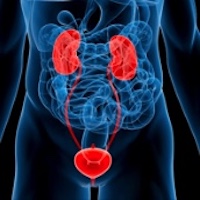Prostate cancer with cribriform pattern: Exclusion criterion for active surveillance?

Accepted: February 18, 2020
All claims expressed in this article are solely those of the authors and do not necessarily represent those of their affiliated organizations, or those of the publisher, the editors and the reviewers. Any product that may be evaluated in this article or claim that may be made by its manufacturer is not guaranteed or endorsed by the publisher.
Introduction: Following the 2014 International Society of Urological Pathology meeting, a rapidly growing body of evidence by several researchers has been demonstrating a poor prognosis in association with cribriform morphology. The aim of our study was to describe the presence of cribriform foci in specimens of radical prostatectomies and to evaluate whether demographic and clinical characteristics are associated with the presence of cribriform pattern.
Materials and methods: This cohort study was based on 70 radical retropubic prostatectomies specimens collected between 2012 and 2016 and evaluated for the association of the cribriform pattern with age, prostate-specific antigen at surgery day, Gleason on biopsy, Gleason after radical prostatectomy, extracapsular extension, vesicles invasion, margins, multiparametric magnetic resonance imaging, and post-operative radiotherapy.
Results; From the univariable analysis, biochemical prostatespecific antigen recurrence (p = 0.001), extracapsular extension (p = 0.003), pre-operative prostate-specific antigen (p = 0.017), vesicles invasion, (p = 0.038) and post-operative radiotherapy (p < 0.001) showed an association with the presence of cribriform pattern. There was also a significant difference of cribriform pattern and Gleason 7 in needle biopsy (p = 0.020) and cribriform pattern and Gleason 8 or 9 in radical prostatectomy specimen (p = 0.036).
Conclusions: In our study, the increase in preoperative prostate-specific antigen had a high association with cribriform pattern. Further evidence is needed to discriminate preoperative prostate specific antigen values that might potentially be associated with the presence of cribriform pattern. Raising our knowledge about the cribriform pattern can be an excellent opportunity to correctly identify and treat patients who will eventually die from prostate cancer, sparing treatment in those who will not.
Quian J, Jenkins RB, Bostwick DB, Detection of chromosomal anomalies and c-myc gene amplification in the cribriform pattern of prostatic intraepithelial neoplasia and carcinoma by fluorescence in situ hybridization, Mod. Pathol. 10 (1997) 1113-1119.
Kweldam CF, Wildhagen MF, Steyerberg EW, et al. Cribriform growth is highly predictive pospostoperative metastasis and disease specific death in Gleason score 7 prostate cancer. Mod Pathol. 2015; 28(3): 457-464. DOI: https://doi.org/10.1038/modpathol.2014.116
Epstein JI, Egevad L, Amin MB, et al. The 2014 international society of urological pathology (ISUP) consensus conference on Gleason grading of prostatic carcinoma definition of grading patterns and proposal for a new grading system. Am J Surg PAthol. 2016;40 (2): 244-252. DOI: https://doi.org/10.1097/PAS.0000000000000530
Dong F, Yang, Wang C, et al. Architectural heteroneneity and cribriform pattern predict adverse clinical outcome for Gleason grade 4 prostatic adenocarcinoma. AM J Surg Pathol. 2013;37(12):1855-1861 DOI: https://doi.org/10.1097/PAS.0b013e3182a02169
Trudel D, Downes MR, Sykes J, et al. Prognostic impact of intraduztal carcinoma and large cribriform carcinoma architecture after prostatectomy in a contemporary cohort. Eur J Cancer. 2014;50(9):1610-1616 DOI: https://doi.org/10.1016/j.ejca.2014.03.009
Kir G, Sarbay BC, Gumus E, Topal CS, The association of the cribriform pattern with outcome for prostatic adenocarcinomas. Pathol Res Pract. 2014;210(10):640-644. DOI: https://doi.org/10.1016/j.prp.2014.06.002
Truong M, Feng C, Hollenberg G, et al. A comprehensive analysis of cribriform morphology on MR/US fusion biopsy correlated with radical prostatectomy specimens. J Urolo. 2018; 199(1):106-113.Moul JW: Prostate specific antigen only progression of prostate cancer. J Urol 2000; 163: 1632–1642
Sarbay BC, Kir G, Topal CS, et al. Significance of the cribriform pattern in prostatic adenocarcinomas. Pathol Res Pract. 2014; 210 (9): 554.557. DOI: https://doi.org/10.1016/j.prp.2014.03.003
Moul JW: Prostate specific antigen only progression of prostate cancer. J Urol 2000; 163:1632–1642 DOI: https://doi.org/10.1016/S0022-5347(05)67511-8
Montironi R, Cimadamore A; Gasparrini S, et al. Prostate cancer with cribriform morphology: diagnosis, aggressiveness, molecular pathology and possible relationships with intraductal carcinoma. Expert Review of Anticancer Therapy. 18, 2018: Issue 7: 685-693. DOI: https://doi.org/10.1080/14737140.2018.1469406
Iczkowski KA, Torkko KC, Kotnis GR, et al. Digital quantification of five high-grade prostate cancer patterns, including the cribriform pattern, and their association with adverse outcome, Am J Clin Pathol 136 (2011) 98-107. DOI: https://doi.org/10.1309/AJCPZ7WBU9YXSJPE
Dong F, Wang C, Farris B, et al., Impact on the clinical outcome of prostate cancer by the 2005 International society of urological pathology modified Gleason grading system, Am J Surg Pathol 2012; 36:838-843. DOI: https://doi.org/10.1097/PAS.0b013e3182486faf
Morlacco A, Cheville JC, Rangel LJ. Adverse disease features in Gleason score 3+4 "favourable intermediate-risk" prostate cancer: implications for active surveillance. Eur.Urol. 72, 442.447 (2016). DOI: https://doi.org/10.1016/j.eururo.2016.08.043
Hollemans E, Verhoef EI, Chris H, et al. Large cribriform growth pattern identifies ISUP grade 2 prostate cancer at high risk for recurrence and metastasis. Modern Pathology 32, 139–146 (2019). DOI: https://doi.org/10.1038/s41379-018-0157-9
PAGEPress has chosen to apply the Creative Commons Attribution NonCommercial 4.0 International License (CC BY-NC 4.0) to all manuscripts to be published.


 https://doi.org/10.4081/aiua.2020.3.235
https://doi.org/10.4081/aiua.2020.3.235



